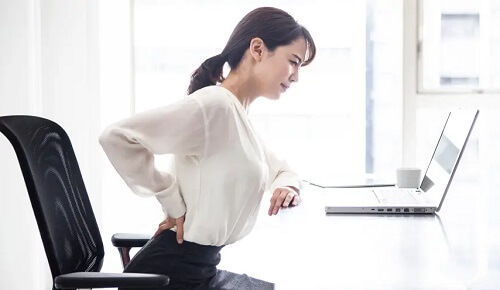Back pain after sitting for long periods at work – tips for a relaxed office routine

Back pain is almost pre-programmed in the case of predominantly sedentary work in everyday working life. It is therefore imperative that measures are taken in everyday working life itself, reflected for example in ergonomic furniture such as a standing desk. This primarily provides relief for the spine. During leisure time, the back muscles can be strengthened sustainably with the help of simple exercises.
Incorporate regular exercise into everyday life
If the trunk musculature does not receive targeted support, incorrect postures can develop within a short time due to the one-sided strain. This in turn can be responsible for back pain. The reason for this is generally that permanent sitting causes, among other things, the muscles of the spine to slacken, as varied, strengthening movements / stimuli are missing.
Therefore, those who consciously choose a workplace that is generally to be declared as a sedentary activity should strengthen themselves through regular exercise. This can explicitly with exercises for the back muscles, but also with many other training units prevent discomfort and wear and tear on the spine.
Bad posture can negatively affect intervertebral discs
People are not really made for sitting for hours on end every day. However, many professions today can only be performed in this way. Regular exercise has proven to be a proven antidote. Therefore, frequent movement breaks and special exercises at the desk in the course of the working day are an important countermeasure.
Special exercises not only train the back and abdominal muscles, regular relief and stress is also essential for the intervertebral discs. This is because the cartilage (intervertebral discs), which are located between the individual vertebrae, must be permanently supplied with nutrients. The fluid that transports them is also responsible for greater elasticity of the intervertebral discs. These can also be described as natural shock absorbers that support the function of the spine. However, if intervertebral discs are neglected, elasticity is lost. A protrusion can develop. This is usually based on a cracked, brittle fibrous ring. Back pain develops, which can ultimately lead to a herniated disc. Meetings can be held standing up, for example, with a standing desk functioning for documents and technology. Seeing colleagues in person is also much more efficient than a simple phone call.
Avoid back tension with the right posture
To avoid sitting for hours on end every day, dynamic posture is essential. This is because the spine, including the intervertebral discs, is considerably overstrained by sitting for long periods of time. Even though office chairs are ergonomically designed nowadays, typical sitting at a desk is virtually predestined to provoke back problems. Standing desks, on the other hand, can support a healthy posture at the workplace.
Normal desks virtually demand that people either bend forward deeply all the time. But this behavior can promote tension and pain in the back. This is because the spine and back muscles are equally exposed to enormous pressure. With the help of an upright posture at the standing desk, the entire body experiences better stability. This is because the back forms a slight hollow back and the pelvis tilts slightly forward.
Preventing back pain with a dynamic posture
If you don’t have a standing desk, special sitting balls are a good alternative. This aid can also support correct posture and appropriate sitting. Special seat cushions have acupressure segments sewn onto them, which are intended to loosen up and relax the back muscles.
A standing desk, however, is the perfect piece of equipment for uncomplicated everyday desk work. However, if only a conventional office chair is available, dynamic sitting should always prevail. This means that the sitting position should be changed regularly. This can prevent one-sided strain on the back and thus also prevent incorrect posture. However, it is ideal to regularly alternate between the desk and the standing desk. The latter can be adjusted in height and optimally adapted for each user.




